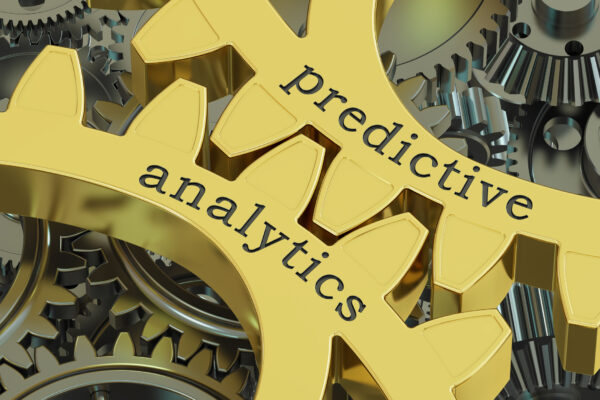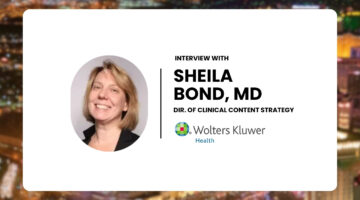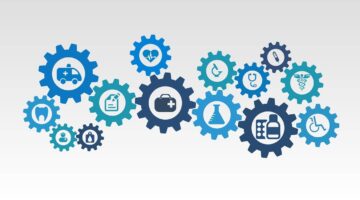
Fluctuating patient demand in the midst of a once-in-a-century pandemic made it hard for health systems to manage their finances in 2020. To help turn the financial tide this year, health executives are looking to invest in predictive modeling technology.
In fact, 74% of health executives responding to a PwC survey last August and September said their organizations would invest more in predictive modeling in the coming year, signaling their keen interest. These tools can be used in several ways, from predicting clinical outcomes to identifying patient preferences to enhancing provider workflows.

Transforming Clinical Content with Ambient & Generative AI
Sheila Bond, MD, talked about the latest trends regarding integration of AI in healthcare.
An industry consultant homed in on the root cause for such an outsize interest in predictive modeling technology.
“With the variability [in patient demand and outcomes] comes a bit of an opaqueness around profitability,” said Gurpreet Singh, health services sector leader at PriceWaterhouseCoopers, in a phone interview. “In order to truly generate the right kind of profitability and resiliency in the business model, you have to better understand the supply and demand.”
Types of predictive modeling tech
One of the tools that can help hospitals keep on top of supply-demand issues is customer relationship management solutions, he said. Not only can CRM tools help predict demand, but it can also suggest the best channel for patient care — be it virtual, in-person or home care.
“CRM data provides behavioral data, and where permitted, combining [it with clinical data] can create strong predictive models,” said Dr. Barry Chaiken, clinical lead at Seattle-based Tableau Healthcare, a part of Salesforce. Tableau’s healthcare analytics platform helps providers create dashboards to aggregate data and track various metrics, like patient satisfaction and cost of care.
Though predictive models cannot directly prescribe patient care, they can recommend actions to increase the chances of a particular outcome, Chaiken said. For example, interaction data, like how often patients see a provider or refill a prescription, could offer insights into what types of patient interactions may work best for a specific population.
Another type of popular predictive modeling technology is analytics platforms that can help identify at-risk cohorts for targeted care efforts, said Jay Compton, managing director and chief technology officer of ConvergeHEALTH by Deloitte, in an email.
Data from these platforms can help providers provide personalized care and identify well-being programs to keep people healthy and out of the hospital, he said.
Austin, Texas-based ClosedLoop.ai is one example of a company that provides a platform to help predict health outcomes. ClosedLoop.ai’s platform integrates data from multiple sources, including medical claims, clinical data and social determinants of health, and includes pre-built model templates for common healthcare metrics, said Carol McCall, chief health analytics officer of the company, in an email.
Providers can use the technology to create predictive models for metrics like unplanned hospital admissions, readmissions, emergency room visits and skilled nursing facility admissions.
“During the pandemic, patients have skipped healthcare visits, including annual wellness exams, check-ups and regular appointments for chronic conditions,” McCall said. “Now more than ever, we need the ability to anticipate health outcomes, identify people at risk and reach out to engage them.”
Interest in predictive modeling tools isn’t limited to supply-demand issues. They can help to improve operational efficiency and at a time when the pandemic is spurring providers to manage their cost-base differently than in the past, PwC’s Singh said.
This is where companies like Santa Clara, California-based LeanTaas come in, which provide solutions to help providers improve operations. For example, LeanTaas’ iQueue product suite takes data from any hospital EHR or other electronic repository and runs machine learning and artificial intelligence models on the data to predict patient demand, said Sanjeev Agrawal, president and COO of LeanTaaS, in an email.
The company aims to help front-line staff make more informed and effective decisions, such as determining how many operating rooms to open when and at what staffing levels, and controlling OR capacity based on constraints such as a lack of personal protective equipment and intensive care unit beds, said Agrawal.
The predictive modeling technology arena is moving toward prospective, real-time insights, said Dr. Sanjay Saxena, global healthcare leader, Payers, Providers, Health Care Systems & Services and managing director at Boston Consulting Group, in a phone interview. Increasingly, providers are trying to connect analytics to actual interventions, both clinical and operational.
“There were a lot of predictive analytics [solutions] that were retrospective if you will, so they relied upon old data…but [with that] it’s too late to be actionable,” he said. “That’s why a lot of the early predictive modeling solutions didn’t yield as much as they originally promised. The newer ones now are relying on more data elements to get better at predicting, but then also linking the prediction from the analytics to an actual intervention.”
As greater adoption of these tools occur and if they work as promised, the benefits of these technologies will last beyond the current public health crisis.
Photo: AlexLMX, Getty Images








